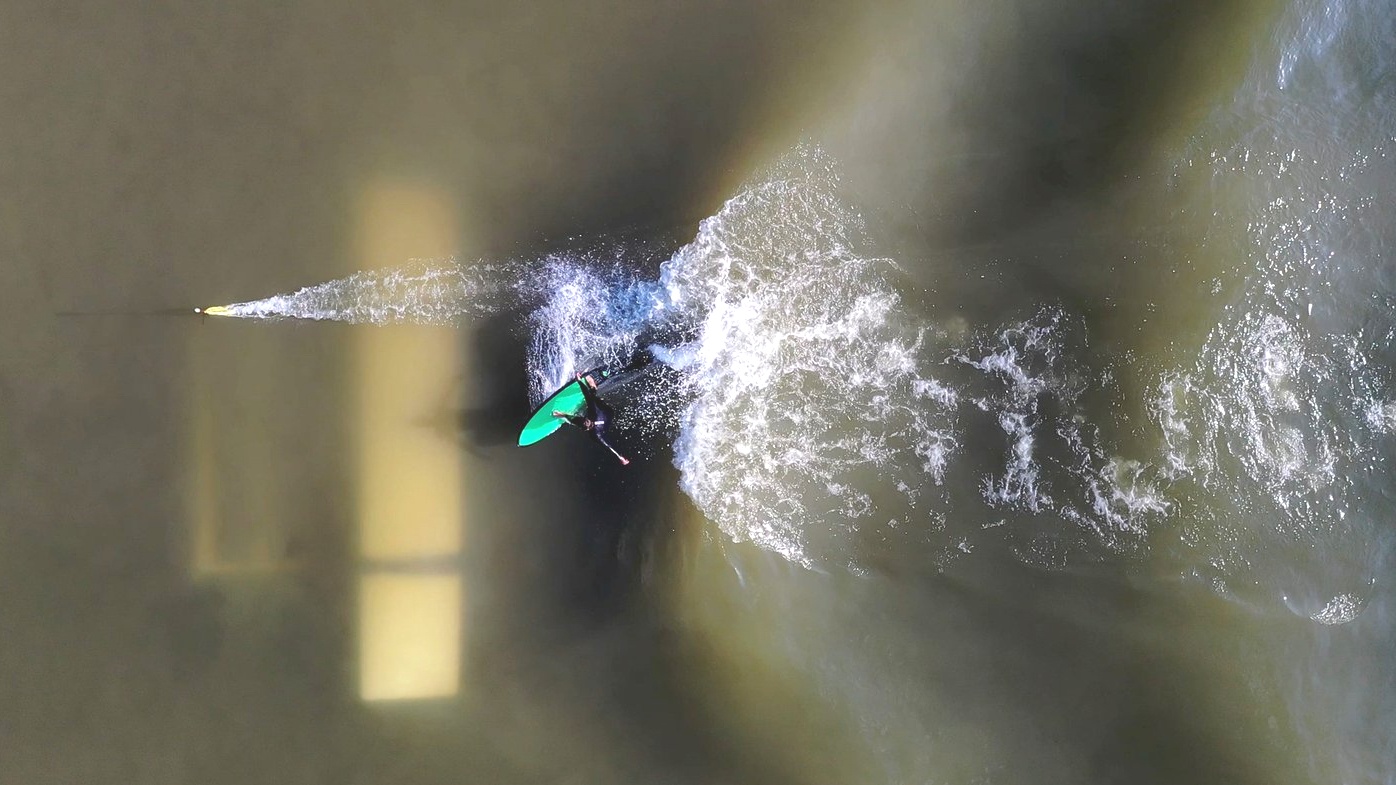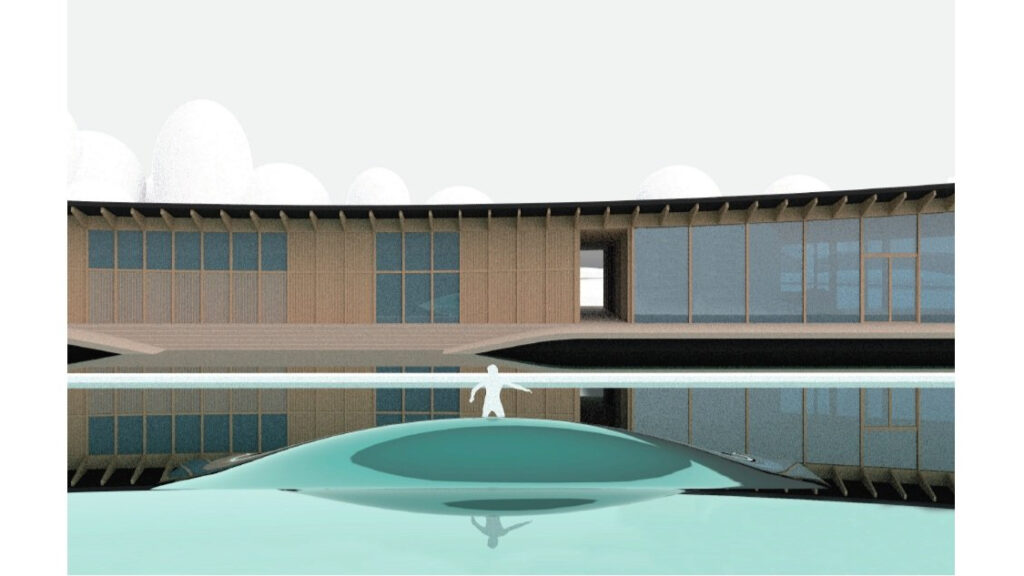Finland airs new traveling rapid wave pool technology

What if you could insert a wave making machine into a natural body of water, surf 6-foot high waves, and then remove it without a trace? That is exactly what Artsurf claims is possible with their new wave creation technology.
With a concept of minimalism and low environmental impact, the Finnish wave creation company has come up with a technology designed for natural bodies of water.
Here’s how it works: A floating system underwater uses an engine and pulleys to pull a set of “wings” through the water that produces surfable waves. It requires a body of water that is at least four to six meters deep and can be installed in as little as three days. If necessary, it can be dismantled in just 24 hours, leaving no residual infrastructure, waste, or alteration to the environment.
“We want to make waves in nature with minimal interference,” said Artsurf CEO Atso Andersen. “Wave pools (in their current form) are not minimal interference. They require huge concrete pools. Our principles are to leave no trace – be as sustainable as possible. That’s what makes us different. In concrete terms we don’t even need the pool, we need open water. Removing the pool lowers the investment cost dramatically.”
According to Andersen the costs of implementing Artsurf technology would only be about 10% of the costs associated with current leading pool technologies that require the construction of a facility. Still, Andersen doesn’t think Artsurf is a direct competitor to the current pools, but a complement for those who are looking for a wave experience more tied with nature.

The current prototype has been built on a smaller scale (watch the video), but it’s within Artsurf’s capabilities to scale up to a wider, 20-second wave that is six feet tall. While they are not ready to promise anything, it’s also within their plans to explore how the wing system could be modified to create a barreling wave.
The concept of Artsurf was born more than a decade ago when Andersen was in Portugal. He admired how surfing was a true sport for young Portuguese and their entire families. Its cultural significance was similar to cross country skiing in Finland in his eyes.
But he thought it was unfortunate that Finns couldn’t enjoy surfing like the kids in Portugal. Finland has plenty of access to bodies of water, but no consistent waves. That’s when it struck Andersen: Why not create the waves himself?
He took the idea to the innovation lab of the university that he was working at in Finland. After overcoming a bit of resistance, the idea soon blossomed into a project that brought together a team of students, professors, engineers, and surfers. After more than ten years of research and testing, Artsurf finally feels they are ready to go to market.
“The interest is global, but there is nothing concrete yet,” explained Andersen when asked about projects they have in the works. “We are in discussions with prospective clients around the world, from South America, USA, Italy, Spain, Portugal, UK, Sweden, Denmark, and Finland.”
“For us the ultimate goal is to deliver a turnkey solution, but it depends on the location,” Andersen added. “You need a feasibility study to figure out how to do it in each location. And on the other hand, we are realistic. There is no system in production yet, so there is still room for a pilot client.”
Once a client is on board, Artsurf could produce and implement the system in three to six months. However, Andersen acknowledged that attaining the rights to put such a system in a selected body of water is a variable that could add time, especially if it is on public land.
Since they are using a system that has not yet been widely tested in the surf park industry, the obstacles they face are in uncharted territory. Those challenges include finding a body of water that can support the system and providing maintenance to parts that are completely submerged underwater.
“We have done research on the technology’s environmental impact,” said Andersen. “The depth of water needs to be at least four to six meters so there is no impact on the floor of the body of water. And the vulnerability of the shoreline is a key issue. If it’s prone to erosion, we can’t do it there. If it’s sturdy, like stone or gravel, and can take the impact of breaking waves, then it’s doable. Those are the two core limitations when it comes to the environment.”
“We also know that everything that is underwater wears out quickly,” added Andersen. “Our system is mobile so you can take everything out for the night. That’s one of the key factors. The other is the material choice and how you run it. We have been researching this over the years, testing different materials and pulleys, everything that could wear out. We are leaning on maritime industry standards, using tested equipment, like those you see on oil rigs and tankers.”

Artsurf has solutions to all their technical challenges, but the biggest challenge has a less straightforward answer.
“We are in Finland, a country where there is (almost) no surf,” Andersen said with a chuckle. “We know that the phenomenon is there, but the biggest challenge is to find collaboration partners to do the pilot projects – basically, sales.”
Once a partner is found, Andersen envisions any number of business models that could work with the system. They imagine scenarios where cities use the system in urban waterways as a promotional and marketing tool, or surf resorts that want to attach the waves to accommodation and other systems. Andersen even imagines a situation like a ski resort where you have multiple waves side-by-side that offer different levels of difficulty, like choosing to go down the blue square or black diamond slopes.
“Riding waves should be for everyone,” Andersen said as he summed up his mission. “And we want our impact on nature to be the same (when we leave) as when we came.”
Related Coverage
